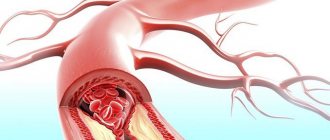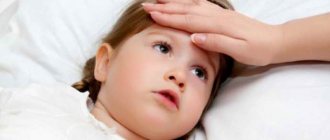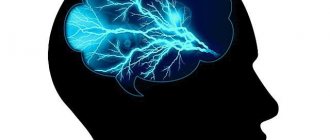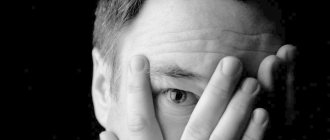Schizophrenia is a mental disorder that is characterized by significant deformation of thinking and perception. Clear consciousness and intellectual abilities are usually preserved, although some cognitive defects may develop over time. The most important psychopathological features include vocalization of thoughts, delusions, and auditory hallucinations. Some patients comment or discuss themselves in the third person.
The following forms of schizophrenia are distinguished:
- permanent;
- episodic with increasing or persistent defect;
- paroxysmal with complete or incomplete remission.
The diagnosis of schizophrenia is not made in the presence of extensive, manic manifestations, in the absence of evidence that schizophrenic manifestations preceded the affective disorder. Diagnosis of schizophrenia cannot be objective in the presence of an identified brain disease, during intoxication or drug withdrawal syndrome. If such disorders develop during epilepsy or other brain diseases, according to ICD-10 they are classified as F06.2, with participation in the development of psychoactive substances - F10-F19.
The first signs of schizophrenia
Schizophrenia can develop slowly and unnoticed by the patient. The first signs of schizophrenia are usually isolation from society, social isolation, emotional coldness, indifference to loved ones and one’s appearance, loss of interest in things and events that previously fascinated the patient. Possible sleep disturbances. In adolescents, the first signs of schizophrenia can be confused with problems characteristic of this age. The child may begin to study worse, lose interest in friends, become depressed or irritable, and have trouble sleeping.
Main symptoms of schizophrenia
Symptoms of schizophrenia are usually divided into 3 main groups. Psychotic (positive) symptoms are hallucinations (patients with schizophrenia often “hear voices”), delusions (misconceptions, and the patient is very difficult, if not impossible, to dissuade them from them). This same group of signs of schizophrenia includes disturbances in perception, the inability to put their own thoughts in order (patients may stop in the middle of a phrase and/or invent non-existent words, speech becomes confusing and difficult to understand) and unusual movements (repetition of the same movements over and over again). again or “freezing” for a long time in a strange position - catatonia). Negative symptoms of schizophrenia: patients have difficulty expressing normal emotions, they are unable to have fun, they may appear depressed or disconnected from reality (as if they are not there), and they have little interaction with other people. Cognitive symptoms of schizophrenia, that is, a violation of the thought process: patients find it difficult to use newly acquired information, make decisions, cannot concentrate, and their memory deteriorates. Each group of symptoms of schizophrenia can be expressed to varying degrees.
Substance abuse
In patients with schizophrenia, substance abuse is relatively common as a mental disorder concomitant with schizophrenia . According to S. Andreassen et.al. (1987), “although psychopathological conditions predispose to the abuse of various substances, this abuse also predisposes to psychopathological conditions.” If substance abuse precedes the onset of schizophrenia, it accelerates the time of its onset.
Almost 50% (in the literature this percentage varies significantly - 15-70%) of patients with schizophrenia, most often men, demonstrate dependence on psychoactive substances. At the same time, neurotic (anxiety disorders, phobias), personality and affective disorders are more often combined with alcohol abuse than schizophrenia.
Main causes of substance abuse in schizophrenia
- Use of psychoactive substances for the purpose of self-medication: relief of depressive spectrum disorders, negative symptoms, side effects of antipsychotic therapy;
- Inadequate therapy with drugs that are dangerous in terms of the formation of addiction (benzodiazepines, anticholinergics, etc.);
- Negative suggestibility, imitation of other people;
- Conformism;
- Facilitated access to psychoactive substances.
According to K. Muesser et al., (1990), in the group of patients with schizophrenia, schizoaffective disorders and schizophrenia-like psychoses, 47% drink alcohol, 42% use cannabis, 25% use stimulants, 18% use hallucinogens, 7% use sedatives, 4% - “drugs as such.”
Substance abuse and schizophrenia
- Increased severity of positive symptoms;
- Frequent relapses of schizophrenia;
- Frequent hospitalizations;
- The need for long-term treatment in a special hospital;
- Financial difficulties;
- Viral infections caused by infection through parenteral administration of psychoactive substances;
- Criminal behavior.
It has been noted that patients with schizophrenia are more inclined to take dopaminergic drugs, which partially reduce negative symptoms, while provoking a number of productive symptoms (Steinberg J., 2001). Cocaine and amphetamine, as typical dopamine agonists, are characterized by exacerbation of symptoms of schizophrenia.
Substance abuse usually begins in the context of poor compliance and inappropriate medication treatment. In the case of a combination of schizophrenia with dependence on psychoactive substances, the prognosis is usually unfavorable, regardless of the use of certain antipsychotics.
In second place after alcoholism in patients with schizophrenia is cannabis abuse. According to various authors, the risk of schizophrenia in case of cannabis abuse is on average 6-7% of all cases of relatively regular use of this substance.
Multiple substance abuse is common in schizophrenia. Due to the above, in patients with schizophrenia it is necessary to carefully collect a drug history and, during the initial examination, check for the presence of psychoactive substances in the body by conducting toxicological screening of blood serum and urine. In terms of differential diagnosis, it should be borne in mind that drug addicts have better social adaptation, interpersonal relationships are easier to build, and sexual activity is increased compared to patients with schizophrenia.
Taking drugs can trigger the manifestation of schizophrenia and contribute to its relapse.
For patients with schizophrenia with comorbid drug addiction, it can be recommended to take fairly strong antipsychotics that simultaneously have a weak anticholinergic effect. In addition, patients with a “dual diagnosis” (schizophrenia and substance dependence) should receive antidepressants in addition to antipsychotics.
According to some data, patients with “dual diagnosis” have an increased risk of developing tardive dyskinesia during treatment with antipsychotics. On the other hand, akinesia caused by taking a neuroleptic and the resulting anergy may contribute to self-medication with psychostimulants. Note that correction of extrapyramidal disorders with the help of anticholinergic drugs can also lead to abuse of the latter. One of the first signs of dependence on drugs of this class should be considered changes in the cardiovascular system: ECG widening of the QRS complex, prolongation of the QT interval and the appearance of tachycardia.
In the presence of poor compliance, which, as we noted above, is often observed in such patients, it is possible to recommend the prescription of long-acting forms of antipsychotics, presumably suppressing the craving for a psychoactive drug. In particular, the use of flupenthixol depot was previously widely practiced in the treatment of schizophrenia combined with alcoholism. Some authors note the effectiveness of amantadine in the treatment of schizophrenia complicated by addiction to cocaine and anticholinergic antiparkinsonian agents (Kosten T., 1989).
It is known that patients with schizophrenia who abuse cannabis respond worse to antipsychotic therapy than patients without drug dependence.
The need for a cautious approach to the relief of intoxication psychosis caused by taking psychoactive substances should be emphasized. The administration of classical antipsychotics can cause epileptiform syndrome in case of overdose of stimulants.
In the process of multimodal-oriented psychotherapy for patients with schizophrenia who use psychoactive substances, it is important to improve compliance, increase motivation for treatment (“motivational interview technique”), and develop a long-term rehabilitation program for such patients, including contract therapy options with the mandatory involvement of family members in therapy sick.
Forms of schizophrenia
The American Psychiatric Association has eliminated the classification of catatonic, paranoid, and disorganized schizophrenia because it does not help determine treatment or how effective it will be. However, the previous version of the Diagnostic and Statistical Manual of Mental Illnesses (DSM-IV), published by the American Psychiatric Association, reflected two types of classification of schizophrenia: by the nature of the course (continuous or sluggish schizophrenia and paroxysmal schizophrenia) and by manifestations (catatonic schizophrenia, hebephrenic or disorganized schizophrenia, paranoid schizophrenia, undifferentiated and residual).
With catatonic schizophrenia, the patient either does not speak and remains in one position for hours and days, or, on the contrary, shows increased but aimless activity: walks in circles, waves his arms, makes loud sounds, grimaces, repeats the words and body movements of other people. The patient may not respond to requests and resist attempts to change his position. Wax flexibility is also possible - in this case, the patient's arm or leg can be given any position, and it will remain in this position for hours. In disorganized schizophrenia, a person loses touch with reality. His thoughts are confused, and so is his speech. Characterized by disorganized behavior - inability to dress, wash, prepare food, start pointless arguments, as well as sluggish expression of emotions, lack of eye contact, lack of body language. Sometimes patients show emotions inappropriate to the situation, for example they may laugh loudly during a serious conversation. Paranoid schizophrenia is characterized by delusions and auditory hallucinations. Characteristic signs of this form are anxiety, anger, a tendency to argue, violent actions, thoughts of suicide and that someone wants to harm the patient himself or his family. In the residual form, negative symptoms are present (patients find it difficult to show ordinary emotions, they are unable to have fun), and positive symptoms (delusions, hallucinations) may not be present or they may be mild. Undifferentiated schizophrenia is said to exist if psychotic symptoms (delusions, hallucinations) are present, but the picture does not fully correspond to catatonic, disorganized, or paranoid schizophrenia.
Differential diagnosis of types of paranoid schizophrenia
It is advisable to clinically distinguish between different types of schizophrenia as early as possible in order to immediately resolve the patient’s social issues, as well as to choose the right treatment tactics.
Differential diagnosis of the paranoid form is carried out with the following conditions:
- organic brain lesions, especially malformations (improper connection of arteries and veins);
- neuroinfections, especially HIV, tuberculosis and herpes;
- degenerative (destructive) diseases of the nervous system;
- consequences of meningoencephalitis suffered in childhood;
- metabolic diseases (Konovalov-Wilson, leukodystrophy, Neumann-Pick);
- substance use;
- psychotic reactions;
- delusional disorder chronic;
- neuroses and personality disorders;
- endocrine disorders, especially of the pituitary gland and thyroid gland.
Treatment of schizophrenia
Schizophrenia can be treated, but it cannot be completely cured. Existing methods of treating schizophrenia help get rid of the manifestations of the disease or reduce them; Today, many patients with schizophrenia can lead a normal life, find a job, and start a family. But they must always take antipsychotic medications prescribed by their doctor. Sometimes a patient has to try several before finding a medicine that suits him. Drugs used to treat schizophrenia may cause side effects such as blurred vision, restlessness, drowsiness, dizziness, rash, and others. Patients may gain weight. But you can’t suddenly stop taking medications for schizophrenia; you need to tell your doctor about all the side effects, and he will select another drug. Psychotherapy, group therapy, rehabilitation and educational programs, and social skills training are also used in the treatment of schizophrenia.
Medicines for schizophrenia belong to the group of antipsychotics. They help eliminate or reduce hallucinations, delusions, perceptual disturbances and other psychotic symptoms, and reduce the risk of relapse. Antipsychotics can be taken orally (by mouth) or injected (by injection). There are now long-acting medications that can be administered biweekly or monthly. Medicines used to treat schizophrenia may cause side effects such as blurred vision, anxiety, dizziness, rapid heartbeat, rash, and others. Patients may gain weight. But only a doctor can replace the medicine for schizophrenia.
Tobacco smoking
Tobacco smoking as a mental disorder is observed in patients with schizophrenia approximately 2 times more often than in the general population (Kelly C. et al., 1999). Almost 80% of patients suffering from schizophrenia smoke, of which almost 100% are men and 47% are women (Ryzhkova O.V., 1999). According to American researchers, about 90% of people with schizophrenia smoke cigarettes, compared with 20% of the general US adult population.
Most patients with schizophrenia tend to smoke. Alcohol and nicotine accelerate the pharmacokinetics of antipsychotics, which leads to the need to increase the dosage of these drugs to obtain a good treatment result.
A number of studies have shown that administration of bupropion SR to patients with schizophrenia significantly reduces nicotine dependence, reducing the number of cigarettes smoked. If we take into account that this drug reduces the severity of negative and depressive symptoms of schizophrenia and is a prophylactic against weight gain in patients, then we can assume that its use can significantly improve the condition of patients with schizophrenia who are prone to smoking.
Is schizophrenia a disability?
Schizophrenia may be an indication for the assignment of disability, but this decision is made by specialists of the medical and social expert commission. Research shows that 70 percent of people with schizophrenia in the United States would like to get a regular job, but less than 15 percent of patients succeed. By working and earning money, people with schizophrenia can feel like useful members of society; in addition, working in a team improves social skills, while self-isolation at home worsens negative symptoms. Working patients are advised to avoid stress and overwork. In the UK they have the right to shorter working hours and flexible working hours. If the patient does not work, he is entitled to financial support.
Paroxysmal-progressive (fur-like) course
The name of this type of schizophrenia has nothing to do with warm winter clothing. Translated from German, “shub” means “push” or “shift.” Furs are called attacks of exacerbation of the disease, separated by more or less long periods of remission. In the early stages of schizophrenia, the personality defect is mildly expressed. Each attack entails a deepening of the personality defect.
The types of attacks depend on the form, not the stage, of schizophrenia. During an attack, acute psychosis may develop with a predominance of delusions (poisoning, persecution, jealousy, etc.), hallucinations or catatonic disorders. In mild cases, exacerbations with a predominance of psychopathic or neurosis-like symptoms are sometimes observed.
A favorable course of the disease is characterized by rare attacks alternating with long-term remissions. In these cases, the personality defect may not remain clearly expressed even in the later stages of schizophrenia.
With an unfavorable course of schizophrenia, periods of remission gradually decrease, and negative symptoms quickly increase. In the later stages of schizophrenia, a transition from the fur-like type of the disease to a continuous one is observed, or a long-term late remission develops. In both cases, a pronounced personality defect arises. Incomplete remissions are often observed, accompanied by residual symptoms: suspicion, anxiety and delusional interpretation of the actions of others.











